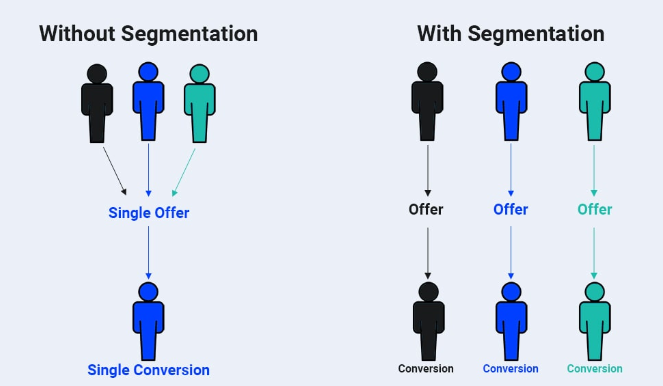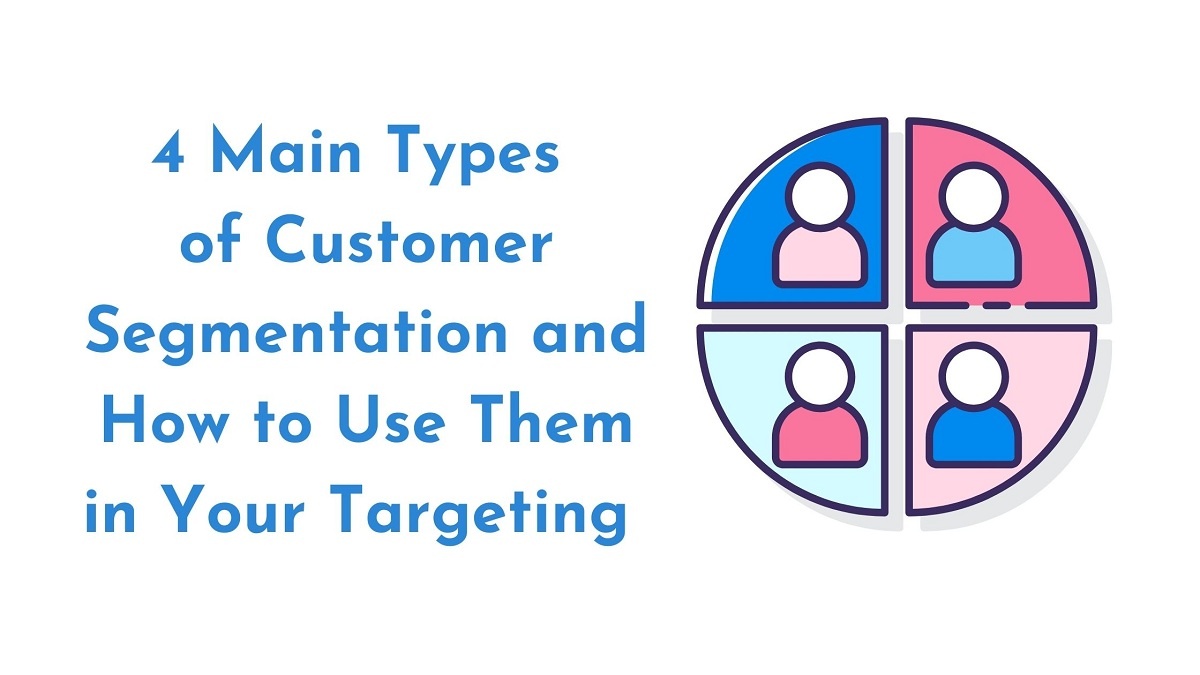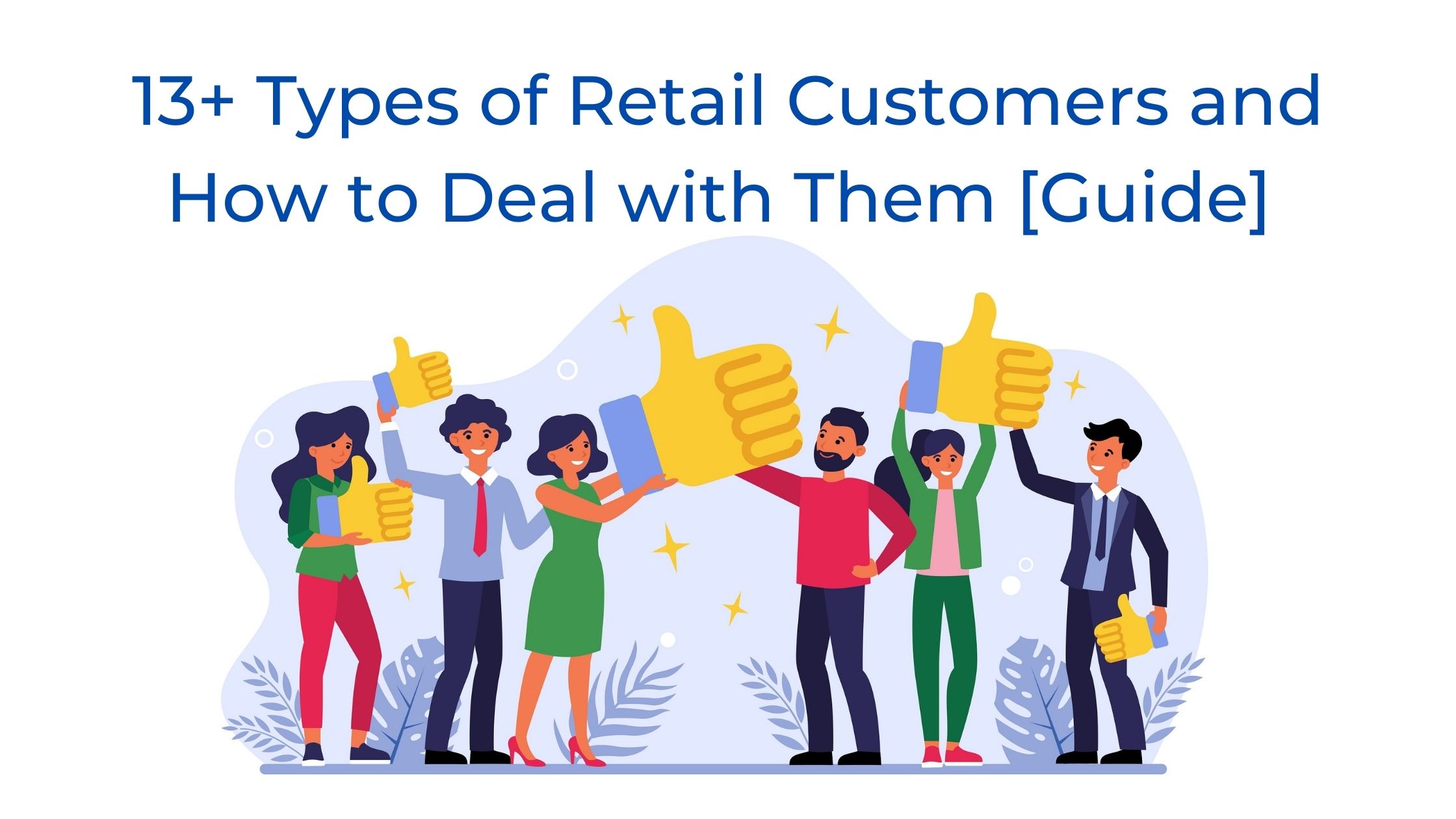5 Mistakes To Avoid With Your eCommerce Customer Segmentation Strategy
As an eCommerce business, it's essential to have a clear understanding of your target market. After all, how can you hope to effectively sell your products or services if you don't know who your customers are?
One way to get a better handle on your target market is to segment your customers into different groups. This process is known as customer segmentation, and it can be a powerful tool for boosting your eCommerce sales.

With customer segmentation, you can customize your marketing efforts to better appeal to each customer group. As a result, you'll be able to increase your conversion rate and average order value. Not to mention, you'll also be able to save money on your marketing campaigns.
So, how do you go about segmenting your customers? This guide will give you a headstart on developing your eCommerce customer segmentation strategy.
How to Build an eCommerce Customer Segmentation Strategy
There are a number of different ways that you can segment your eCommerce customers. Here are a few of the most common methods, also known as the types of customer segmentation:
1. Demographic Segmentation
One of the simplest ways to segment your customers is by their demographics. This could include factors like age, gender, income, location, and similar.
For example, you might segment your customers by age groups such as 18-24, 25-34, 35-44, 45-54, and 55+. Or, you could segment them by income levels such as $0-30k, $30k-60k, $60k-100k, and $100k+.
2. Psychographic Segmentation
In addition to demographic segmentation, you can also segment your customers based on their psychographics. This includes factors like lifestyle, personality, values, and interests.
For example, you might segment your customers by lifestyle choices such as health-conscious, eco-friendly, or trend-setters. Or, you could segment them by personality types such as introverts, extroverts, or ambiverts.
3. Past-Purchase Segmentation
Another effective way to segment your customers is by their past purchase history with your eCommerce store. This could include factors like what they've bought, how often they buy, how much they spend, and similar data.
For example, you might segment your customers by their purchase frequency, such as one-time buyers, occasional buyers, and loyal buyers. Or, you could segment them by the type of products they usually buy, such as essential items, luxury items, or seasonal items.
4. Traffic Source Segmentation
You can also segment them by the traffic source that they come from. This could include factors like referring sites, organic keywords, paid ads, or social media. That way, you can better understand which marketing channels are most effective for reaching your target market.
For example, you might segment your customers by the referring site such as Google, Facebook, or Pinterest. Or, you could segment them by the organic keyword that they used to find your site, such as "men's shoes" or "women's clothing."
5. Visitor Type Segmentation
First-time customers aren't the same as returning customers. And, prospects aren't the same as leads. That's why it can be helpful to segment your visitors by their type.
This could include factors like whether they're a new visitor or a returning visitor, whether they're a prospect or a lead, and more. You can then tailor your marketing efforts to better appeal to each visitor type.
For example, you might create a special offer for first-time visitors to encourage them to make a purchase. Or, you could send a follow-up email to prospects who haven't converted yet.
Mistakes to Avoid with Your eCommerce Customer Segmentation Strategy
Now that you know a few of the most effective ways to segment your eCommerce customers, it's important to avoid making any mistakes that could sabotage your efforts. Here are a few of the most common mistakes to avoid:
1- Not Having a Clear Goal
When segmenting your customers, it's crucial to have a clear goal in mind. Otherwise, you'll just be segmenting for the sake of segmenting.
Think about what you want to achieve with your customer segmentation strategy. For example, do you want to increase brand awareness? Drive more traffic to your website? Increase conversion rates?
Once you have a goal in mind, you can create a segmentation strategy to help you achieve it.
2- Not Collecting the Right Data
To segment your customers effectively, you need to have the right data. Otherwise, you won't be able to segment them properly. Make sure you're collecting data points that are relevant to your goal. For example, if you want to increase conversion rates, you'll need data points like purchase history and website behavior.
3- Segmenting Too Narrowly/Broadly
When segmenting your customers, it's important to strike the right balance. You don't want to segment too narrowly, or you'll miss out on potential sales. But, you also don't want to segment too broadly, or you won't be able to target your marketing efforts effectively.
Find a happy medium by segmenting your customers based on factors like demographics, psychographics, and behavior.
4- Not Keeping Your Segments Up-to-Date
Your customer segmentation strategy won't be effective if your segments are out-of-date. That's why it's important to regularly update your segments based on new data. This way, you can be sure that you're always targeting the right people with your marketing efforts.
5- Not Acting on Your Segments
Finally, it's important to actually use your segments to inform your marketing decisions. Otherwise, there's no point in segmenting your customers in the first place.
Use your segments to create targeted marketing campaigns that appeal to each group. For instance, personalize your emails, create targeted landing pages, and run ads relevant to each segment.
In Conclusion: Don't Miss Out on the Benefits of Customer Segmentation
Customer segmentation is a powerful marketing tool that can help you boost your eCommerce business. By segmenting your customers, you can create targeted marketing campaigns that are more likely to resonate with them, eventually translating into more sales.
Avoid making common mistakes like not having a clear goal, not collecting the right data, and not using your segments to inform your marketing decisions. By following these tips, you can make sure that your customer segmentation strategy is effective.


